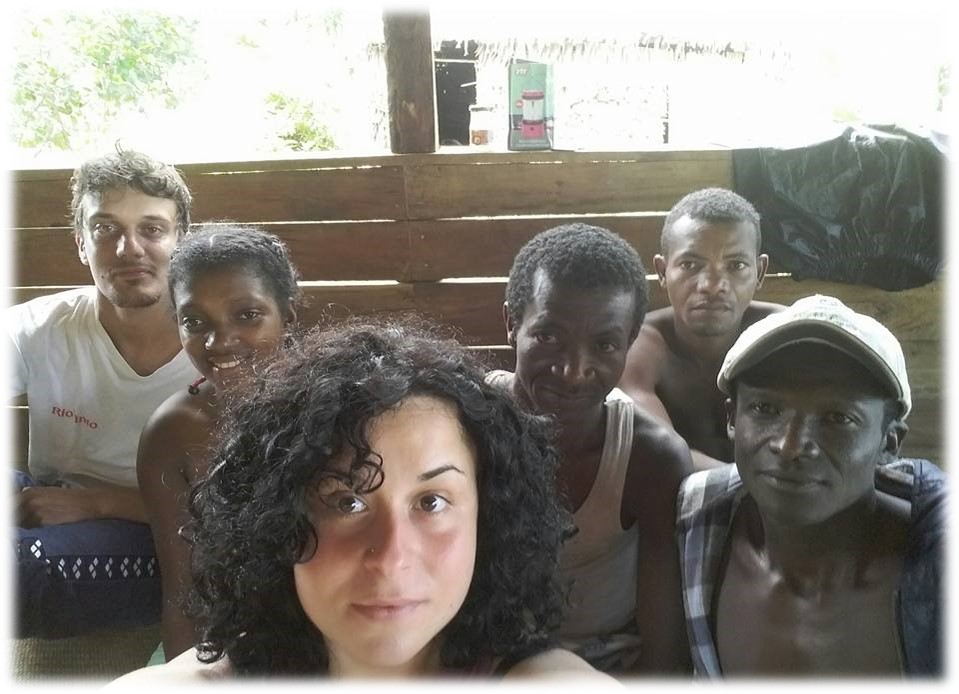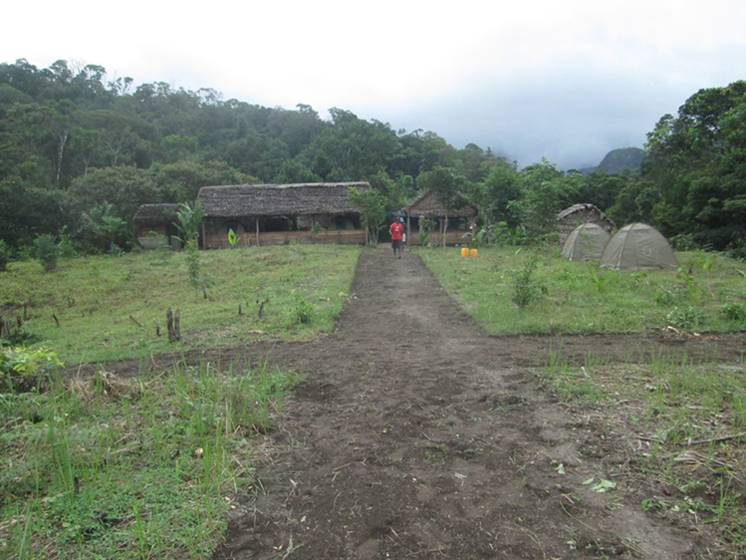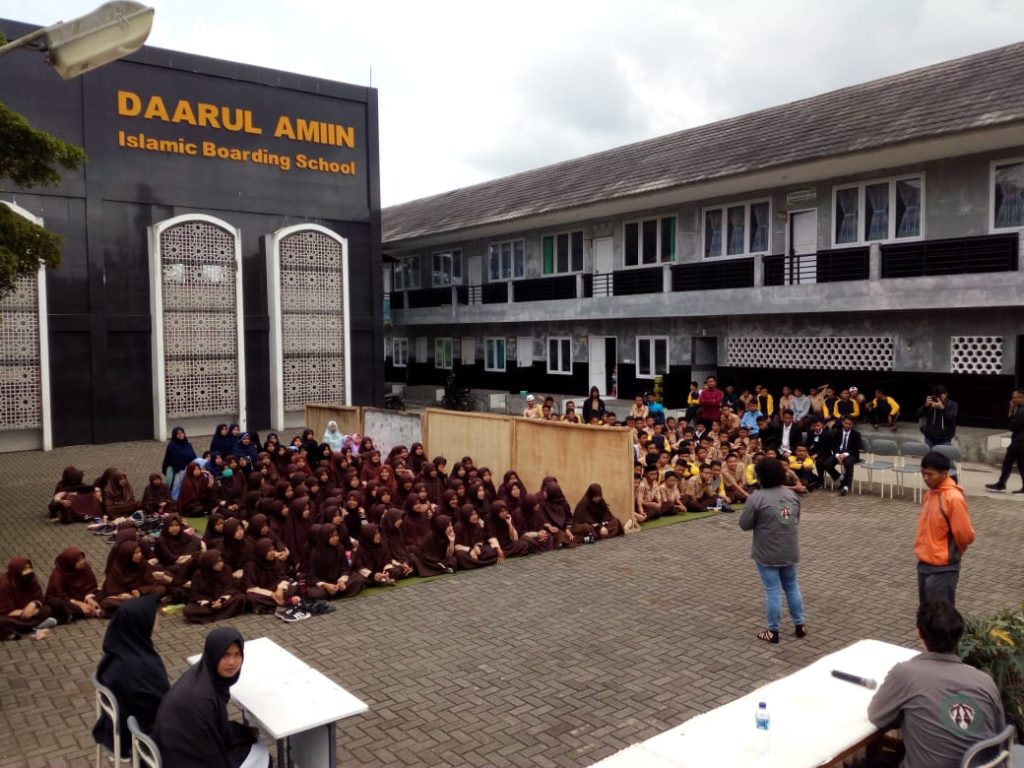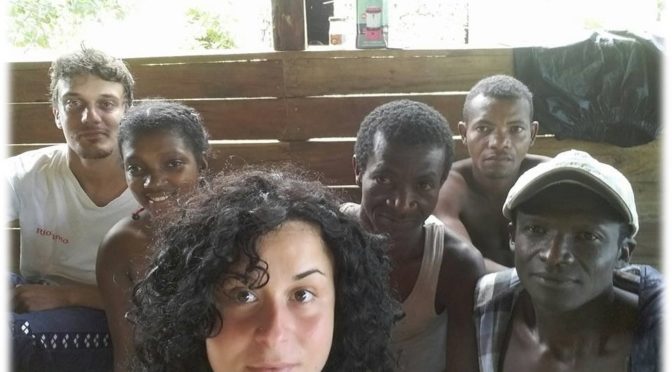Hi everybody, I am Michela, the new field station coordinator. I arrived in Indonesia three weeks ago. This is my very first time here, but before I conducted my MSc and my PhD research in Madagascar. Today I would like to share with you some thoughts related to research, conservation, and community engagement.

Me together with the team at the Ampasy research station, Tsitongambarika, Madagascar
My time in Madagascar
I conducted my PhD research in South Eastern Madagascar, in the lowland rainforest of Tsitongambarika. Here I spent 15 months collecting behavioural and ecological data on a nocturnal species: the Southern woolly lemur, Avahi meridionalis. Furthermore, I conducted a conservation education project with local teachers from villages nearby the research station. Madagascar is a biodiversity hotspot and a conservation priority. Madagascar is one of the poorest countries in the world with more than 92% of people living on less than $2 a day. The education level is low, especially in rural villages. This lack of education has been considered as one of the reasons for the dramatic habitat loss over the last 60 years. Environmental education is thus crucial in Madagascar to encourage long-term protection of the habitats.

Conservation education project
My conservation education project consisted of four training lessons to local teachers included in an environmental education program promoted by the NGO Asity Madagascar (partner of BirdLife International). During those lessons we discussed different environmental subjects related to lemur conservation and preserving their habitat. Surprisingly most of the teachers did not know that lemurs are endemic of Madagascar and they were not aware of lemur diversity. They were, however, aware that lemurs were threatened by human activities. After this experience, I realised the need and importance of conservation education and started to have a deep interested in this topic.

My experience as teaching assistant
This led me to be teaching assistant for the “Conservation Education” module led by Prof Anna Nekaris at Oxford Brookes University. In this exciting experience I learnt a lot about methods to use in conservation education. Teaching conservation education requires lot of experience and knowledge. Researchers often give to children distressing information about threatened animals in a wrong way. When researchers cover gripping topics such as human-wildlife interactions and hunting they may obtain an opposite result, i.e. children may feel afraid, guilty, or hopeless and this can result in a lack to foster pro-conservation behaviors. Especially when working with children, it is important to share positive messages in a friendly way, and share more information on animal ecology, sociality, and their importance for conservation.

The role of researchers for community engagement
My favourite time during my field research has always been collecting behavioural data in the forest. Surveys are usually tiring due to many reasons (mosquitos, leeches, rain, extremely cold or extremely hot weather) but I find priceless the feeling of belonging to their group. In fact, once they are habituated, they display their natural activities without worrying about researchers’ presence. However, after conducting the conservation education project and also after training local guides to conduct research in the field I realised how community engagement can be considered as a key to conservation success. Researchers may conduct research abroad for even for years but is the community that is making the difference in the long-term. Giving the proper tools and knowledge to the community is actually the ace in the sleeve for conservation. Conservation education with children is very powerful. Children, in fact, can share knowledge with their parents. Furthermore, they will be the adults of the future and can make a difference protecting the environment.

Conservation Education in Cipaganti
I am happy to join the conservation education project here at Little Fireface project. I had the pleasure to attend a conservation education session with the previous field station coordinator: Ella Brown. Read about Ella’s final thoughts after one year in Cipaganti here, and about her conservation education project here. She did an amazing job conducting the forest protector. I am planning to conduct a conservation education project related to a recently started wildlife coffee project. I will tell you more about the coffee curriculum in a future blog, stay tuned! MICHELA BALESTRI


